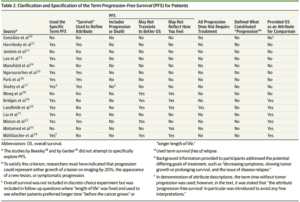Full Guide to FIO Riders in Physician Disability Insurance

When you purchase individual disability insurance, your insurance company will present you with several customizable options. One of those is the option to choose riders that add extra benefits to your policy, one of the most important ones being the Future Increase Option (FIO).
In this complete guide to FIO riders in physician disability insurance, we’ll explain what the FIO is, why you need it, and how it can offer even more financial protection if or when you start collecting disability benefits.
What is the Future Increase Option Rider?
Sometimes called the Future Purchase Option, Future Insurability Rider, or Future Benefits Rider, the FIO is one of the most beneficial riders a physician can add to a disability insurance policy.
There are two key reasons why.
Increase Coverage as Your Salary Increases
When you get disability coverage, your insurance company will cap your maximum monthly benefit at approximately 60% of your salary. Regardless of your medical specialty or how many years you’ve been practicing, your coverage amount is always based on your current income.
When your annual income grows, you’ll want to increase your coverage along with it so that you’re always protecting yourself with the largest coverage amount possible. This is precisely what the FIO is for.
No Need for Another Medical Evaluation
The FIO is one of several ways to purchase additional coverage and earn more disability income if an injury or illness prohibits you from working.
One way to bump up coverage is to cancel your policy and purchase a new one — but that requires a new medical underwriting process. That’s problematic for two reasons:
Your monthly premiums are based (in part) on your age.
Your monthly premiums will be higher if you have a pre-existing condition.
A new medical screening could detect a pre-existing condition that didn’t exist when you first bought the policy, which would undoubtedly raise your premiums. A future increase option allows policyholders to purchase more disability coverage without undergoing a new health evaluation.
How Does the FIO Rider Work?
All reputable insurance companies allow you to add some variation of the FIO to your disability policy. There are nuances in policy terms from one insurer to another, but the FIO works basically the same way with each insurance provider.
Policyholders can exercise the future increase option when their salary grows and they need more coverage. To do so, you’ll need to provide the insurance company with documentation that proves your salary has grown. Based on the policy provisions, your insurer will approve the increase in (or decline your request to increase) your coverage amount.
Remember that upping your coverage amount will also increase your monthly premium.
When Will Your Insurance Company Contact You?
Some insurance companies will contact you yearly on your policy anniversary and extend an offer to increase coverage. At that point, you can accept or reject the offer. Other insurers will never contact you and require that you contact them when you’re ready to exercise the increase option.
How Will the Increase Work, Exactly?
In addition to who initiates the increase, insurance companies often have different terms that apply to how it works.
For example, Guardian, one of the top disability insurance providers in the US, offers two FIO options. One is to up coverage annually until the age of 55. The other option is to purchase additional coverage every three years up to age 55.
No matter which type of future increase option you select or which policy provisions you opt for, the key is always protecting yourself with the maximum benefit amount the insurance company will allow you to take.
The FIO Rider is Not the Only Way to Increase Coverage
FIO is one of several riders you can add to your policy to boost your monthly benefit over time. Other riders you might want to consider are:
Automatic Increase Benefit (AIB)
Benefit Update (BU)
Benefit Purchase Rider (BRP)
Benefit Increase Rider (BIR)
Automatic Increase Benefit
Like the FIO, the AIB allows you to up your disability income benefit as your salary grows. But with the AIB, it’s not an option — it’s mandatory.
The Automatic Increase Benefit automatically adds more coverage every three years up to a set period of time. The problem is that when your insurance carrier says it’s time to increase your benefit, you have to accept it.
Unfortunately, you have to accept the higher premium rates that go with it, too.
Benefit Update, Benefit Purchase Rider, and Benefit Increase Rider
The BU, BRP, and BIR are slightly different from the AIB, but they all work similarly. With one of these three increase options added to your policy benefits, you must initiate the coverage increase on your own.
You’ll also need to request more disability benefits every three years, even if you don’t want more. The insurance company will then let you know how much more they’re willing to give you, and you will have to accept at least 50% of that new amount.
You’ll lose the rider if you fail to request an increase every three years or refuse to accept at least 50% of their proposed amount.
The Future Increase Option is the More Flexible Choice
Any increase rider you add to your policy will add to your premium. Some physicians opt for the BU, BRP, BIR, or AIB because it sometimes costs less than adding the FIO.
But the FIO is by far the better and more flexible option with the best flexibility.
Here’s why:
The FIO doesn’t require you to get more coverage … ever. It simply gives you the option to, if and when you choose. You will never be forced to add coverage that will raise your premiums.
FIO riders are also the safer bet, especially for physicians who don’t want to have to think about increasing their coverage at a particular point in time.
With the BU, BRP, or BIR, you’ll lose the rider and option to add more coverage if you forget to apply for the increase every three years. Should you lose the rider and then decide you need more coverage, you’ll need to initiate a new policy, requiring new underwriting and a whole new medical exam.
As discussed earlier, this could result in higher premiums or uncover new conditions. Some insurers have pre-existing limitations that could prevent you from getting a new policy at all.
How Much Does the FIO Rider Cost?
Of all the riders that exist, the FIO is one of several worth the added cost. There is no standard price for the FIO, but it is generally about 2% of the total policy cost.
Which Other Riders Should I Consider?
When customizing a disability insurance policy, there are a few other riders you’ll want to add on as well.
Own-Occupation Definition of Disability
The own-occupation rider upgrades the definition of disability from the standard “any occupation” to that of “own occupation.” With this change, you’ll be able to collect benefits as long as your medical condition prevents you from performing your current job duties.
Without it, you’ll only be able to collect if you’re too ill to work in any job whatsoever. Every physician needs this rider.
The following six insurers are the only companies that offer this definition:
Ameritas
MassMutual
Principal
The Standard
Guardian
Ohio National
COLA Rider
The Cost of Living Adjustment raises your monthly benefit every year in accordance with inflation rates and the Consumer Price Index. As inflation goes up, your disability income payouts will grow proportionately.
Guaranteed Renewable
It’s essential that you add a guaranteed renewability option to your policy. This ensures that your insurance company cannot cancel your coverage as long as you continue to pay your monthly premiums.
Student Loan Repayment Rider
Physicians with medical school student loan debt should add the student loan repayment rider. With this add-on, your insurance company will pay you extra monetary benefits on top of your regular monthly payout to cover your student loan obligations.
What about mortgages? Read: Mortgage Loan Programs for Medical Professionals [Varying Disciplines]
Consider the Benefit Period and Elimination Period
In addition to disability riders, two other policy terms will affect your premiums:
Benefit period
Elimination period
The benefit period is the length of time in which you can collect disability income. This can be as little as two years or all the way up until retirement age. The longer the benefit period, the more the policy will cost.
The elimination period is the time between when you’re diagnosed with your illness or injury until when you can start collecting benefits. Elimination periods range from 30 days up to approximately 720 days. The shorter the elimination period, the more the policy will cost.
When customizing your policy, you may consider offsetting the cost of the FIO by choosing a shorter benefit period or a longer elimination period. While that is possible, it’s always best to carry the most coverage for the longest benefit period, with all of the above-mentioned riders added to your policy.
Who Should Add the FIO Rider?

Most insurance providers have an age limit for when you can exercise the future increase option. For most insurers, that’s around age 55. If you wait until you’re already in your early 50s to get a policy (not recommended), the FIO isn’t as relevant.
It is, however, absolutely critical for younger physicians and medical residents that have decades of earning potential in front of them. Residents and physicians new to practice are sure to make a higher salary in the future, and that means they’ll need more coverage in time.
This is precisely what the FIO is intended for, but it has an added bonus as well:
Younger physicians who can’t afford to take the maximum coverage can now use the FIO to add coverage when they can afford to take the max coverage amount. This is a great way to keep insurance expenses low when starting your career and raise them when you have more expendable income.
The FIO is beneficial to all policyholders. The bigger your monthly benefit, the more of your salary you’ll protect and the more money you’ll have to put toward mortgage payments, daily expenses, family obligations, investments, and retirement savings.
Conclusion
When adding disability riders to your policy, the Future Increase Option is among the most important.
Is it the only way to increase coverage in the future?
No, but it is the most flexible choice for physicians that want to add more coverage on their own terms, when they want.
To choose the best disability insurance policy and decide which riders are right for you, contact LeverageRx now. Our experts can help you obtain quotes, compare policy terms, and protect yourself with a disability income insurance policy customized just for you.


